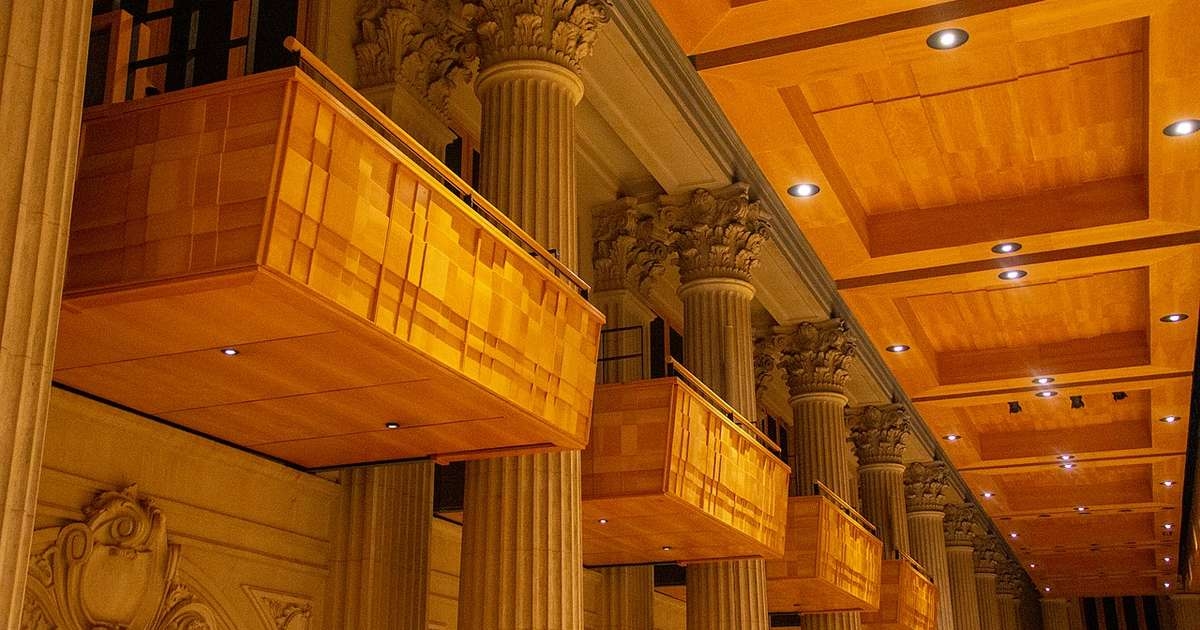Discover Sala São Paulo: cultural and musical heritage of the capital of São Paulo

Amidst São Paulo's urban landscape, a venue recognized for both its architectural significance and its role in the world of music stands out: Sala São Paulo. This venue has become a landmark for concerts and events, attracting visitors interested in exploring one of São Paulo's most notable cultural landmarks.
Opened at the turn of the 21st century, Sala São Paulo occupies part of the historic building of the former Sorocabana Railroad. The venue was carefully restored to house the São Paulo State Symphony Orchestra, better known as Osesp. The building combines classical elements of its original structure with modern acoustic engineering solutions, creating a unique atmosphere for musicians and audience alike.
Sala São Paulo is part of a process of protecting and enhancing the city's heritage. Its headquarters, located in the Júlio Prestes Complex, was designated a heritage site by preservation agencies due to its historical, architectural, and cultural value. Renovating an early 20th-century railway building into one of the world's most respected concert halls was a meticulous process that maintained its original features while incorporating advanced technologies.
It's worth noting that Sala São Paulo's acoustics are internationally recognized, considered among the best in the world. Experts point to the venue's versatility, thanks to its movable panel system that allows for adapting sound conditions to suit the type of performance—from large orchestras to intimate recitals.
Beyond its historical significance, Sala São Paulo impresses with its architectural details and innovative solutions. Its main features include:
- Adjustable Acoustics: Mobile structures according to the musicians’ needs.
- Capacity: Approximately 1,500 seats, distributed across two auditoriums and galleries.
- Complementary Spaces: Areas dedicated to rehearsals, events and educational activities.
- Location: Located close to the central region, facilitating access by various means of transport.
With these particularities, Sala São Paulo has established itself not only as the headquarters of Osesp, but also as a stage for festivals, exhibitions and various shows, attracting artists and audiences from Brazil and abroad.
How to visit and enjoy the venue's programming?For those interested in exploring the venue, Sala São Paulo can be visited during performances or on guided tours, which allow visitors to see areas normally restricted to the public. The frequently updated program includes everything from symphonic concerts to popular performances, chamber music recitals, and educational activities.
- Check the official website or communication channels for schedules and event schedules.
- Purchase tickets in advance, especially during busy seasons.
- Check out guided tour options for an immersive look at the history and behind-the-scenes of the room.
- When planning your visit, pay attention to dress code and schedule recommendations in advance, as some performances require different routes and preparation.
The site's infrastructure also includes accessibility, cafes, common areas, and cultural product stores, increasing visitor comfort.

Attracting international acts and fostering the development of Brazilian musicians, Sala São Paulo plays a vital role in Brazil's cultural landscape. Since its inauguration, the venue has fostered interest in concert music and promoted projects focused on education and the democratization of access to culture.
In recent years, Sala São Paulo's diverse programming and partnerships with cultural institutions have strengthened its position as a hub for the arts, expanding the reach of young audiences and emerging talent. These efforts contribute to preserving Brazil's musical heritage and bringing different generations closer to high-quality artistic expression.
In 2025, Sala São Paulo continues to stand out not only as an imposing building, but as a symbol of São Paulo's commitment to music, historical preservation, and the appreciation of cultural experiences available to all.
terra




